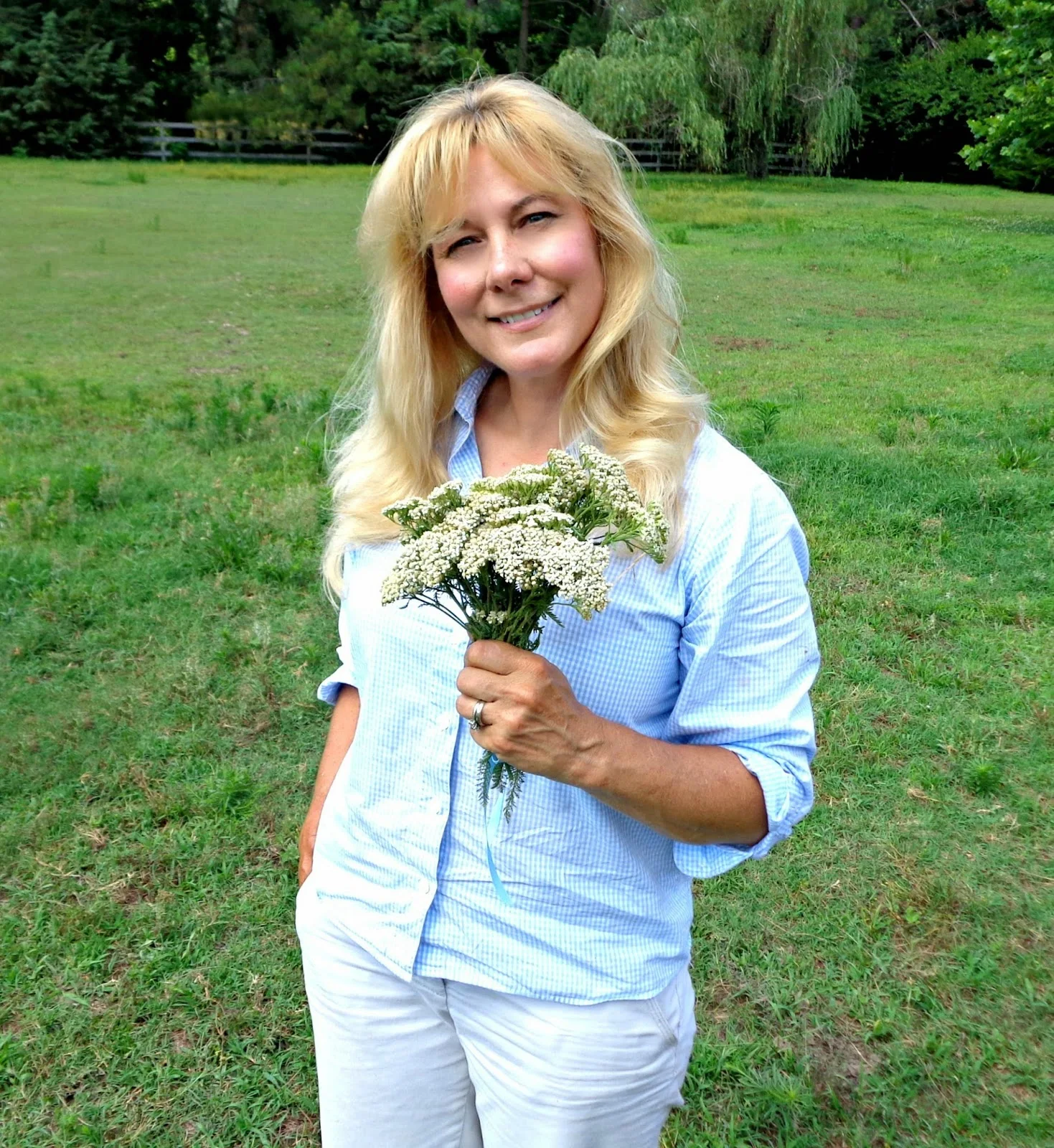Herbs for Hens®: Yarrow and Queen Anne's Lace
Yarrow is a flowering plant that grows wild in much of the United States and has many, many health benefits for both humans and chickens.
Herbs for Hens®: Yarrow
Yarrow is considered a meadow weed by many, and an invasive weed by many more, and you will likely see it growing along the highway or in unmown fields, but it has so many health benefits for chickens - and it's actually really pretty as a cut flower that lasts a long time ina bouquet in a vase.Yarrow comes in white, yellow and pink.
The History of Yarrow
In ancient times, yarrow was used mainly to stop bleeding and heal wounds. fact, according to mythology, Achilles used yarrow to treat fallen comrades. Alternate names for yarrow include 'soldier's woundwort' and 'nosebleed plant'.
Mention of yarrow has been found in Native American Indian writings as well as Chinese, Ayurvedic and ancient Greek medical journals.
Health Benefits of Yarrow
Studies have shown that wild birds will line their nests with yarrow which helps to repel parasites. Yarrow also will kill mosquito larvae.
Yarrow root can be chewed to aid in tooth aches - not really anything chickens need to worry about! But yarrow also has anti-inflammatory and antiseptic properties.
It can guard against bacteria and improve digestive health. Dried yarrow flowers and leaves can be added to your chickens' feed so they reap the benefits.
Probably most importantly for us chicken keepers, yarrow is drying and aids in respiratory health.
Especially beneficial when mixed with goldenseal, fresh or dried yarrow flowers can be brewed into a tea to help clear up eye and nasal secretions and respiratory infections.
Just steep the cut flowers in boiling water for ten minutes then let cool and serve it up to your flock!
Yarrow in the Chicken Coop
Bouquets of fresh yarrow hanging in your coop can help prevent respiratory problems in your flock by keeping their airways dry as they munch on the flowers.
Since chickens have very small, weak lungs and complex breathing systems, keeping them working properly is key in backyard chicken care.
We are lucky to have a field of yarrow growing across the street from our house, so I liberally pick it all summer and hang it in our coop to try and combat some of respiratory issues that can arise because of the high the humidity here.
I also dry the leaves and flowers and crush them to use all winter as a feed add-in.
Why not try to find some yarrow in an empty field, pasture or growing along the roadside - or grow some in your herb garden?
Yarrow attracts butterflies and ladybugs, actually improves the quality of the soil in which it is planted and can also aid in the health of other plants around it!
A Warning about Yarrow Look-alikes!
Sound too good to be true?
Well, there IS one problem: both Queen Anne's Lace (also known as Wild Carrot) and Hemlock look surprisingly similar to Yarrow, although there are some differences that you can look for to be sure you have the right plant before using it in your home our with your chickens!
Queen Anne's Lace
Queen Anne's Lace is a harmless biennial weed in the parsley/carrot family that grows wild in much of the United Stated and Canada. According to legend, it is named after Queen Anne of England who once pricked her finger while tatting lace.
In the center of each bloom is a small, dark red dot that represents the dot of blood from her finger. That's the easiest way to identify Queen Anne's Lace.
Queen Anne's Lace is also referred to as "Wild Carrot". The leaves of the Queen Anne's lace are similar to the yarrow (and carrot) leaves, and are very lacy and delicate.
The flower, leaves and root are all edible but don't offer the same health benefits of yarrow, nor are they particularly palatable according to everything I've read. I admit I have not tried eating any!
However, the blossom can be eaten, and apparently battered and fried it's quite good (I mean what isn't good battered and fried?) and the seeds and leaves can be used in soups or stews and brewed as tea.
As a natural healing poultice, the leaves can be steeped in boiling water and applied to cuts to prevent bacterial infections.
Photo CreditWater Hemlock
WARNING: Water hemlock (pictured above) another member of the parsley family, is a very similar-looking plant. It is also a perennial that grows wild and consists of a white flower head made up of individual smaller blossoms.
However it is highly toxic, especially the roots (remember Socrates?).
Fortunately, it is fairly easy to differentiate hemlock from either Queen Anne's Lace or Yarrow, since hemlock lacks the fern-like leaves that yarrow and Queen Anne's Lace has, instead having much larger, traditional-looking leaves.
Hemlock also has a very different-looking flower head than either yarrow or Queen Anne's Lace.
The benefits of yarrow are hard to dispute for humans as well as chickens, but just do a bit of research first to be sure what you've got IS yarrow and then plan on adding some yarrow to your natural chicken keeping regiment.
I hope you enjoyed this installment of Herbs for Hens®. Stay tuned for the next in the series coming soon!



































